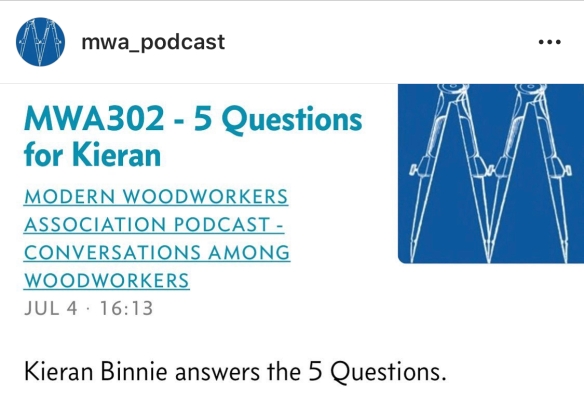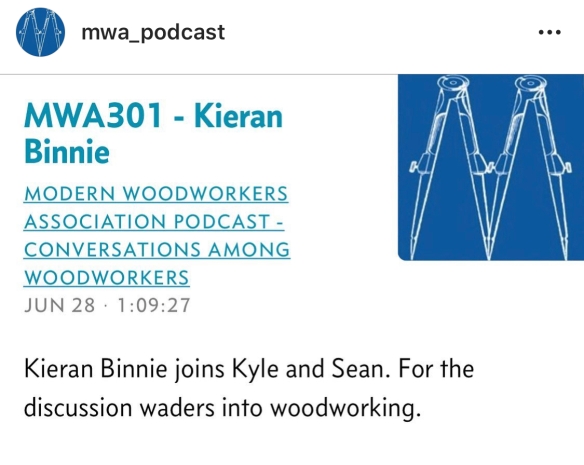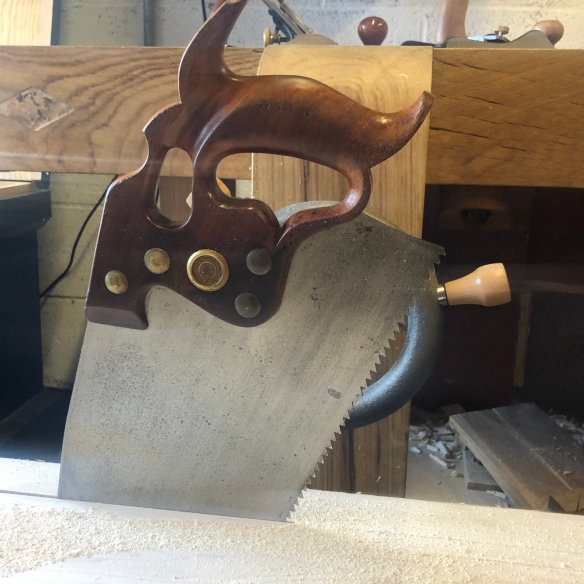
This old girl is 120 years old and still cuts the line like she’s on rails
I’ve now got one shelf left to process and then I’ll be ready to cut the joinery for the boarded bookcase. Processing the shelves has been a lot quicker thanks to only smoothing the show face (the top surface of the shelf) and leaving the underside scalloped texture from traversing with the No5 plane. This approach is consistent with how the furniture record shows historic makers treating secondary surfaces, and the change in texture offers a pleasant change for those who explore the finished piece.
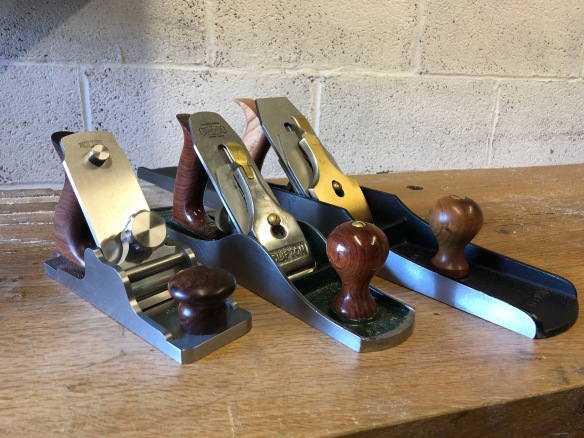
Workhorses
Not that smoothing and achieving a perfect glassy surface is a chore, but it does take time. At the moment I’m putting a Holtey 985 through its paces in readiness for an article which will be in print later this year. Sadly the plane will then be returned to Karl, but it’s been a very interesting experience using a high-end handmade plane. If you want to know whether a plane that costs more than a family car is worthwhile, and the design process of one of the greatest plane makers in the world, then stay tuned for more details soon.
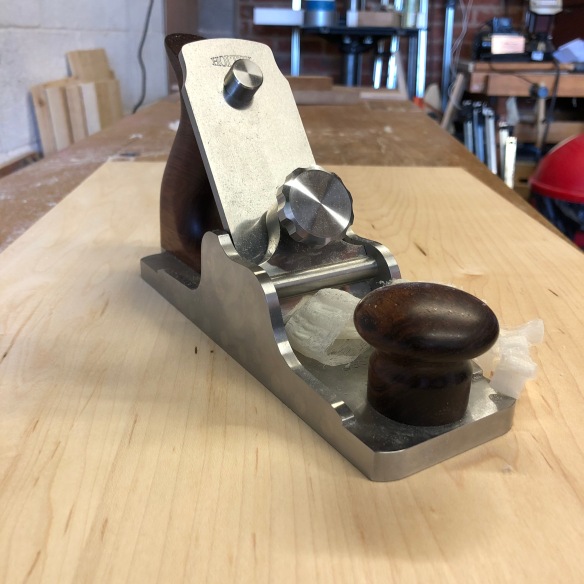
Flawless finish on truculent maple courtesy of Karl Holtey
My process for the shelves has been to joint the boards oversized, and then once the glue has cured rip them to 1/2″ over-width using my Disston D8 (which turned 120 years old this year). The shelves will be orientated so that the widest board of each is at the front of the bookcase. The shelves are then flattened and surfaced on the show face, and then thicknessed from the underside by traversing with the jack plane. Working to the layout lines when thicknessing the shelves means that shelves will be flat and straight from traversing, so no other work is needed. Then it is a case of jointing the edges. I’ve not yet shot the ends of any of the components square yet, because I have the Veritas fence and track for a new shooting board waiting to be installed, but need to venture down to my local timber yard for some baltic ply. Shooting the sides and shelves to length should be quite a quick task once the shooting board is assembled, and then I can get on with the fun work of cutting joinery (six dados to fit the shelves to the sides). There’s not been much to write about with this build so far, which is why the blog has been a bit quieter than usual. But that should change once we get to the joinery.

